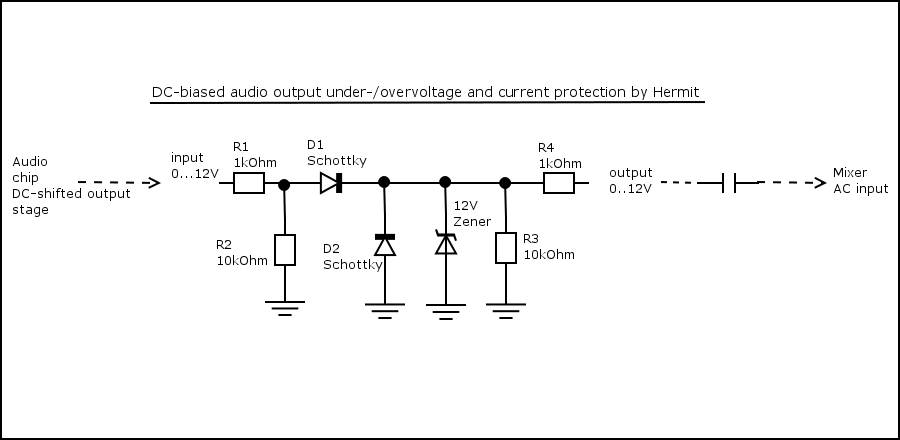|
| |
AKA :
SID-protector
Website :
http://hermit.sidrip.com
Credits :
| Graphics | .... | Hermit of Samar Productions, SIDRIP Alliance, Singular |
| Design | .... | Hermit of Samar Productions, SIDRIP Alliance, Singular |
| Idea | .... | Vincenzo of Molecoola, Rebels, SIDRIP Alliance, Singular |
| Test | .... | Vincenzo of Molecoola, Rebels, SIDRIP Alliance, Singular |
Download :
Look for downloads on external sites:
Pokefinder.org
User Comment
Submitted by Jak T Rip on 25 September 2016
| Yes, prevent SID deaths please! |
User Comment
Submitted by Hermit on 28 August 2016
I have to correct a little bit what I wrote about 6581 below: Actually it was not tested with direct 6581 output but through a replica of the transistor-stage of the original C64, including the 1kOhm resistor on the input which is required for the old 6581 SID-model.
So to be compatible with both SID-models I think it's best to connect the input of this circuit directly on the output of the transistor (emitter of 2SC1815 or 2SC945) in the C64 sound output stage (before the output decoupler capacitor). |
User Comment
Submitted by Hermit on 28 August 2016
I designed this simple SID-protector some months ago as Vincenzo needed some protection for SIDs to record safely. I tested the circuit in ngspice (SPICE circuit simulator linux implementation), and Vincenzo built and tested it on real hardware. He didn't try to stress-test it for obvious reasons (too many SIDs died already in C64 history), but the circuit simulation shows that this simple circuit protects SID's output from overvoltages and reverse voltages/currents. If the diodes are of Schottky type (with enough reverse breakdown voltage for the task), the circuit can have less impact on the output signal due to the series diode and more protection in the negative voltage region on SID-output. 50V and more breakdown voltage diodes are preferred because in practice phantom power around 48V is the biggest that a mixer or other devices can drive to the C64 output by accident.
If the diodes are normal-type (e.g. 1N4148), then D2 in parallel with the Zener doesn't do much and can be left off...
The circuit only worsk with DC output of the SID (or maybe the transistor current amplifier output) and provides DC output which should be filtered with a series capacitor to remove the DC component of the signal or connected to the transistor current amplifier in the C64. The latter hasn't been tested yet, Vincenzo simply used RCA sockets to directly drive the outputs out from the C64... That worked with both 8580 and 6581 SIDs despite the 6581 having incomplete (non-complementer) output...
We hope this can prevent some further SID-deaths for people who try it...
(hermit) |
|
|
|
 | Search CSDb |
|
 | Navigate |  |
|
 | Detailed Info |  |
|
 | Fun Stuff |  |
· Goofs
· Hidden Parts
· Trivia
|
|
 | Forum |  |
|
 | Support CSDb |  |
|
 |  |
|


